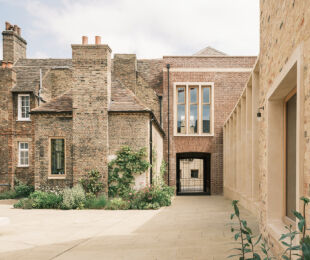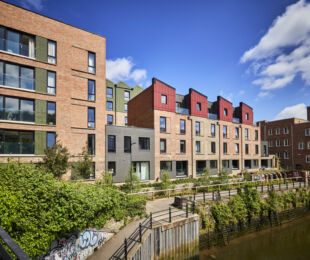UNDERSTATED MATERIALS' MATERIAL STATEMENTINDOOR SPORTS CENTRE, UNIVERSITY OF BIRMINGHAM

Located on a brownfield site adjacent to the Edgbaston Conservation Area, Lifschutz Davidson Sandilands’ Indoor Sports Centre at the University of Birmingham includes the city’s first Olympic-standard swimming pool, together with a range of sports halls and gyms, laboratories and testing facilities. The £35m facility forms a gateway to the University’s Edgbaston Campus and is intended to express a welcoming civic identity to the A38, which runs along the site’s southern boundary. A subtle landscaping strategy responds sympathetically to the existing context and a dramatic change of levels, connecting the city to the heart of the University campus sited some 10 metres above.
The building is conceived as a series of discreet volumes detailed in brick and bronze. Each of the four pavilions is devoted to a specific use – swimming pool, gym and changing rooms, sports halls, and car park – with the volumes shifting in plan and section in response to the topography and to articulate the entrance. Situated to the south, the swimming pool is intended to signpost the centre and the University beyond. A simple arrangement of spaces and structure provides flexibility, while the staggered plan allows any of the volumes to be easily extended in the future. A public colonnade encourages informal access to the building, and onward to the campus, providing an invitational glimpse of the swimming pool through a glazed double-height façade. Once inside, there are views between the pavilions, gym, pool and sports hall, while the reception desk is surmounted by a dramatic climbing wall.
The scheme is designed to achieve an Environmental Performance Certificate rating of ‘A’ and a BREEAM ‘Excellent’ rating. The four pavilions combine to form a virtually square plan with excellent wall-to-floor-area ratio and an efficient and flexible layout. The simple internal layout of spaces and structure, together with an inherent flexibility, is an important aspect of the Centre’s sustainable credentials, says the architect. Embodied energy in fabric and structure equates to many years of carbon used in operation.
Good daylighting in the heart of the building significantly reduces the projected CO2 emissions relating to artificial lighting, and greatly enhances the user experience. Natural ventilation in spring and autumn will also reduce energy consumption. In summer, cool night air will be introduced into the building to lower the temperature of the exposed thermal mass of the fabric, dampening heat gains the next day. When large crowds of spectators attend the sports hall, a natural ventilation ‘boost’ facility, powered by dedicated photovoltaic panels, will improve summer performance. A heat-recovery system also allows the ‘boost’ to be used in winter.
The services are laid out to facilitate future upgrades to meet changing environmental standards with minimal disruption. The development is slated to achieve the first EPC ‘A’ rating for a sports centre in the UK and a BREEAM ‘Excellent’ rating through a host of measures, including very low U-values for its envelope, connection to the university’s district heating system, and an airtightness of 3m3/h/m2 @ 50Pa.






